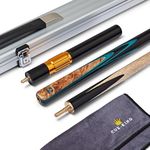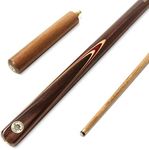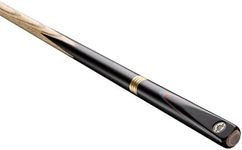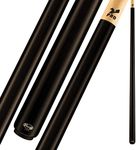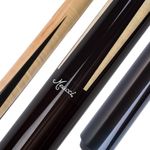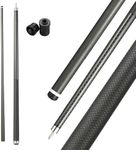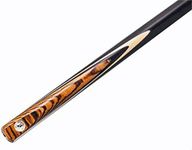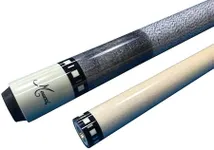Buying Guide for the Best Pool Cues
Choosing the right pool cue is essential for improving your game and ensuring a comfortable playing experience. A pool cue is not just a stick; it's an extension of your arm, and the right one can significantly enhance your performance. When selecting a pool cue, consider factors such as your playing style, skill level, and personal preferences. Understanding the key specifications of pool cues will help you make an informed decision that suits your needs.Cue LengthCue length is the measurement from the butt to the tip of the cue. Standard pool cues are typically around 57 to 59 inches long. The length of the cue is important because it affects your reach and comfort while playing. For most adults, a standard length is suitable, but if you're particularly tall or short, you might want to consider a custom length. If you're buying for a child or someone shorter, a shorter cue might be more appropriate. The right length should allow you to comfortably reach across the table without compromising your stance.
Cue WeightCue weight refers to how heavy the cue is, usually ranging from 17 to 21 ounces. The weight of the cue can influence your control and the power of your shots. Lighter cues (17-18 ounces) are often preferred by players who like to have more control and finesse, while heavier cues (19-21 ounces) can help generate more power in your shots. Beginners might start with a mid-range weight to find a balance between control and power, and then adjust as they become more comfortable with their playing style.
Tip DiameterTip diameter is the width of the cue tip, typically ranging from 11 to 14 millimeters. This specification is crucial because it affects the precision and spin you can apply to the cue ball. Smaller diameters (11-12 mm) are favored by players who like to apply a lot of spin and play with finesse, while larger diameters (13-14 mm) are better for beginners or those who prefer a more straightforward, powerful shot. Consider your skill level and playing style when choosing the tip diameter.
Shaft MaterialShaft material is what the main part of the cue is made from, commonly wood or composite materials. The material affects the cue's feel, flexibility, and durability. Wooden shafts are traditional and offer a classic feel, while composite materials can provide more consistency and are less prone to warping. If you prefer a traditional feel and are willing to maintain the cue, wood might be your choice. If you want something low-maintenance and durable, consider a composite shaft.
Joint TypeJoint type refers to the connection between the shaft and the butt of the cue. Common types include wood-to-wood, stainless steel, and quick-release joints. The joint type can affect the cue's feel and the ease of assembly. Wood-to-wood joints offer a softer hit and are preferred by players who like a more natural feel. Stainless steel joints provide a solid hit and are durable. Quick-release joints are convenient for players who frequently assemble and disassemble their cues. Choose a joint type that complements your playing style and convenience needs.
